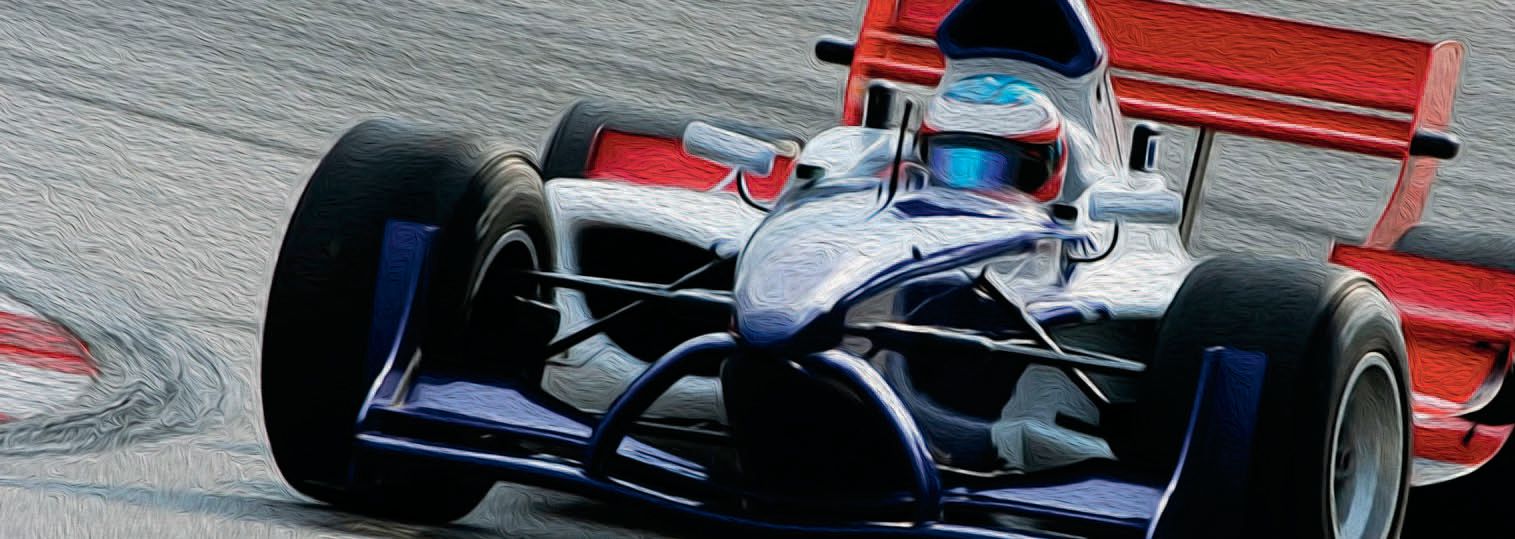Lubricants for Formula One cars
R. David Whitby | TLT Worldwide November 2014
Reducing friction helps to improve power and fuel efficiency.

www.canstockphoto.com
FORMULA ONE RACES INVOLVE FAST CARS, SUPERB DRIVERS, glamour and noise. But in the background are unsung technicians who strive before, during and after every race to get the maximum performance from their team’s cars. Winning a Formula One race can be a matter of fractions of a second. For example, in the Belgian Grand Prix last August, the winning margin was 3.383 seconds in a race that lasted one hour and 24 and a half minutes. This margin is 0.0666 percent.
During each racing season, the design and construction of a car’s engine is essentially frozen as a result of homologation requirements. FIA regulations state that teams may have no more than two cars available for use at any one time. If a driver switches cars between qualifying and the race, he must start the race from the pit lane. A change of cars is not allowed once the race has started. Restrictions on the power unit (engine and energy-recovery systems) and gearbox mean that each driver may use no more than five power units during a season and no more than one gearbox for six consecutive races.
Fortunately, two important areas of a car where teams can uncover extra performance are fuels and lubricants. For many years, oil companies have been leading partners in motor racing, particularly Formula One. The motivation is the huge promotional aspects of the sport. Every Grand Prix weekend attracts a global TV audience of over 300 million viewers. However, the oil companies recognize that fuels and lubricants are not just sundries required to power and lubricate the car. The quality of their composition has a critical affect on its performance.
Involvement in Formula One is primarily a technological challenge intended to demonstrate innovation and technology. Improving performance of fuels and lubricants for normal motoring is an important driver for oil companies.
Formula One lubricants are not governed by any particular regulations, unlike the fuel for which the FIA has defined highly restrictive rules, with the RON restricted to 102. This means lubricants can be formulated with the single objective of improving the car’s performance, without worrying about any limitations. This allows the lubricants to make a maximum contribution to the overall competitiveness of Formula One.
In a 2.4-liter, V8 Formula One engine, developing a maximum power output of nearly 800 hp at 18,000 rpm, the piston speed increases from 0 (upper and lower dead point) to more than 37 m/s (133.2 km/h) and then back to 0. This process is repeated 600 times a second through a distance of about 4 cm. In coping with the enormous mechanical loads exerted between components, the role of the engine oil is to persist in order to prevent any metal-to-metal contact and to retain an appropriate degree of fluidity such that the induced friction in the oil film is as small as possible.
A good engine oil must have a low viscosity, even in the cold, so that it gets around the engine in a fraction of a second on start-up. It must also protect engine components at temperatures up to 300 C without evaporating or carbonizing and maintaining oil pressure.
Lubricants also can contribute to fuel efficiency. A more fuel-efficient engine requires less fuel to travel a set distance, while producing a given power output, compared to a less fuel-efficient engine producing the same power. Less fuel means less weight, and a lighter car is a faster one. Any reduction in friction improves power and fuel efficiency.
Formula One engineers pay attention to the friction-reducing properties of engine oils, gear oils, hydraulic oils and bearing greases. Because of the tribological, oxidative and thermal stresses imposed on these lubricants, they are mainly based on esters and/or polyalphaolefins. The innovations developed by oil company chemists and engineers are then used to improve retail lubricants.
Unfortunately for us, Formula One teams are extremely secretive, not wanting to disclose any information that may help competitors’ engineers. So we’re not allowed to know what goes into the lubricants used in Formula One cars.
 David Whitby is chief executive of Pathmaster Marketing Ltd. in Surrey, England. You can reach him at pathmaster.marketing@yahoo.co.uk
David Whitby is chief executive of Pathmaster Marketing Ltd. in Surrey, England. You can reach him at pathmaster.marketing@yahoo.co.uk.